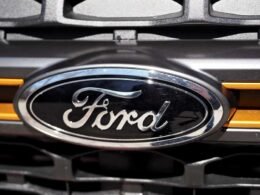Vehicle owners often encounter an unexpected problem when their emission control systems malfunction shortly after routine maintenance. This situation creates confusion and frustration, especially when drivers believe they’ve just taken proper care of their automobiles.
The Hidden Link Between Oil and Emission Systems
Fresh oil changes should theoretically improve engine performance, yet some drivers discover their neutralizers showing warning lights within weeks of service. The connection stems from how contaminated oil affects internal engine components over extended periods. When mechanics drain old, degraded lubricant, they sometimes disturb sediment and debris that has accumulated in the oil pan and passages.
Understanding the value of catalytic converter becomes important here, as these components contain precious metals that make them worthwhile to sell through specialized platforms like Autocatalyst when replacement becomes necessary. The timing of failures after oil changes isn’t coincidental but rather reveals underlying issues that were masked by thick, contaminated oil.
Common Causes of Post-Service Neutralizer Problems
Several factors contribute to emission system failures following oil changes, and mechanics don’t always explain these connections to customers.
The most frequent culprits include:
- Oxygen sensor contamination from disturbed engine deposits – When fresh oil begins circulating through previously clogged passages, it can carry metallic particles and carbon buildup that eventually reach oxygen sensors, causing them to provide incorrect readings to the engine control unit
- Increased combustion efficiency revealing existing problems – Clean oil allows engines to run more efficiently, which can expose pre-existing issues with fuel injection systems or ignition components that were previously masked by poor lubrication
- Temperature changes affecting ceramic substrates – Fresh oil often allows engines to reach optimal operating temperatures more quickly, and sudden temperature fluctuations can crack already-weakened ceramic honeycomb structures inside neutralizers
These issues develop gradually but become apparent when engine conditions change after maintenance.
Prevention and Maintenance Strategies
Smart vehicle owners can take several steps to minimize the risk of emission system problems. Regular maintenance schedules should include checking oxygen sensors and monitoring engine performance parameters beyond just oil condition. Mechanics recommend using high-quality oil filters and ensuring proper disposal of old lubricants.
Drivers experiencing neutralizer problems shouldn’t panic about replacement costs immediately. Professional diagnosis can determine whether the issue stems from sensors, fuel system components, or the actual emission control device itself. Sometimes simple sensor cleaning or software updates resolve the problem without expensive part replacements.
When replacement becomes inevitable, owners should remember that old neutralizers retain significant value due to their precious metal content. Services like Autocatalyst provide platforms where drivers can sell their old units to buyers who extract valuable materials, helping offset replacement costs while ensuring proper recycling of these sophisticated automotive components.










